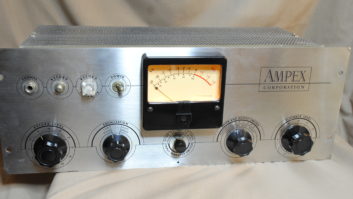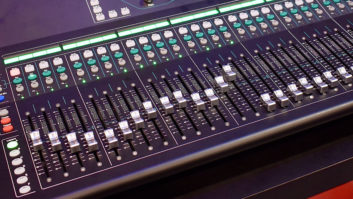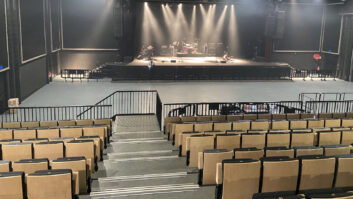The wheels of progress never stop grinding, especially when it comes to digital audio, so it’s no surprise when manufacturers of digital gear introduce firmware updates to their hardware. Sometimes owners anticipate a firmware update in hope that bugs will be fixed, or that totally new features might be added to an existing piece of gear.
As an example, I’ve been part of the process for Metric Halo’s 3d Early Access, whereby customers who purchase a 3d Card Upgrade for their MH Labs device receive a discount on the hardware in exchange for using Public Beta software, which includes firmware updates. Thus far it’s been working out very well. My MH Labs LIO-8 is running a version of Public Beta 6 firmware and is working fine. There are some known issues and some planned features that are not yet complete, but nowhere in the process have I lost use of the interface.
Read more Mix Blog Live: Cabot Theatre.
All the more reason why I found it unsettling last week when I used a particular manufacturer’s digital console and stage box, and ran into an unpleasant surprise. The mixer was connected to the stage box using a digital (AES50) snake. Stage box and mixer booted up and we started to check lines from the stage. The first lines we checked came from sound modules and synths connected to stereo DI boxes. Normally the output from these devices is screaming hot, but—even with the console’s input gain cranked—we could barely touch -30 on the input meter.
Down the troubleshooting path we went. We checked the module’s output levels, then swapped the TRS cables, then replaced the stereo DIs and the XLR cables, none of which solved the issue. We plugged a Shure SM58 directly into the XLR lines, but setting the input gain in the vicinity of +55 dB barely produced an acceptable signal level from the mic. We swapped the mic, changed the stage box channels, changed the AES50 cable, and scratched our heads. Meanwhile showtime was getting close.
The next step was to restart all the gear and try alternate AES50 ports. Same problem: signal passed, but the levels were extremely low. In the meantime, my coworker noticed that some of the network indications on the console were “off” (i.e., off-base, not disabled). The console showed word sync with the stage box but did not identify it in the peripherals menu. Hmmm… We tried changing the sample rate (as a means of rebooting the system) and had the same issues. Everything worked, but the audio levels were just plain wrong. There was no menu setting for “-10” versus “+4” operating level, nor any global pads engaged on the stage box.
With showtime about 10 minutes out we were ready to run an analog snake in place of the digital snake and stage box. There were other performance areas running on-site simultaneously so I asked if there was another console from the same manufacturer available. There was—a smaller version of the same desk. As a last-ditch attempt we swapped that out for Console #1. Lo and behold Console #2 connected to the stage box and produced the correct gain structure. Console #2 also identified the stage box as a peripheral and showed the proper word clock indications. I smelled a firmware rat.
A few days later I tested the connection between Console #1 with the same stage box using the same AES50 cable. And…. (ready?) no issues with the gain. It was a mystery and as James T. Kirk once said, “I don’t like mysteries. They give me a bellyache.” Turns out that Console #1 has an old version of firmware that doesn’t particularly like to play with the firmware in the stage box. Not cool.
I get the idea that a firmware update can add features that weren’t present, and maybe remove some features that were present in an older version. I’ve experienced issues where files created on a newer version of firmware can’t be read by a console running an older version of firmware (or worse—a new file crashes a system running older firmware).
But the idea that a firmware mismatch results in a system that is unusable is unacceptable. This was not a “Beta Test” situation in which we elected to participate. It was the production version of a well-established product. At the very least, a manufacturer has the responsibility to inform their customers that there may be incompatibilities between new and older gear that are supposed to form a system, and to make their best efforts to ensure that fundamental functions are maintained.
We weren’t ready ten minutes out, but we were ready two minutes out…







